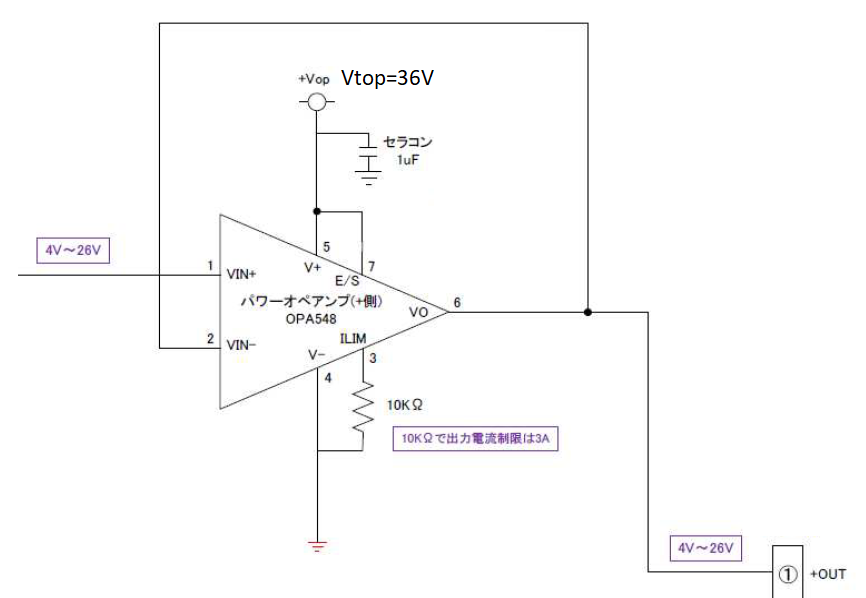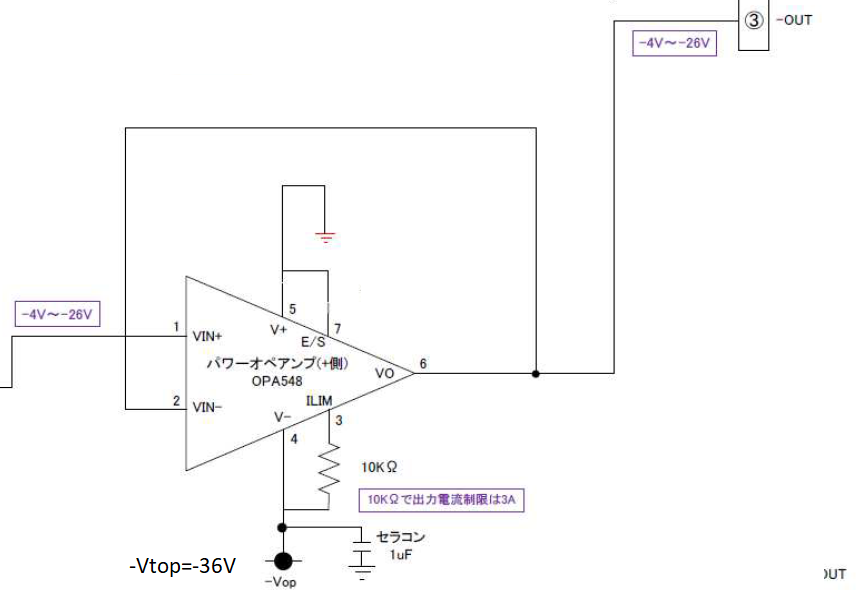Hi,
I have three requests.
- I have set the current limit to 3A on OPA548. Is the current detected on the peak current or an average current? Please let me know.
- My understanding is as follows: Is it correct? Please advise us.
"When the current limit occurs, the output voltage is kept at 3A,. If current limit is released, it is normal output." - My customer is designing the following two Voltage follower circuit. Load of these circuits is capacitive. Do you have any issues? Please advise us.
Case1:
Case2:
Thanks and best regards,
M.HATTORI



